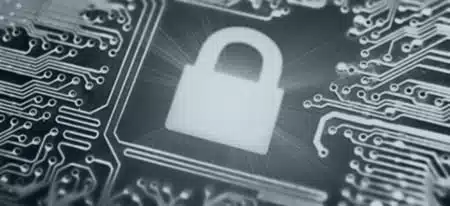Cybersecurity risk assessment services
Our cybersecurity risk management expertise

Security risk assessment

Secure system architecture

Secure development

Secure update & CVE patching

Chief Product Officer


Risk assessment: Our “security by design” approach

SUCCESS STORY
Security Hardening for Firstkind medical device: a case in cybersecurity risk management
Firstkind Ltd already had a successful medical device in the market, but they wanted to launch a new product range to address different users needs. This new device would be designed to help elite athletes, using the sport variant of the medical device, to benefit from device reuse.
To achieve this, Firstkind Ltd aimed to adapt their existing device model and add Bluetooth connectivity so that it could be used in parallel with an application. But with any connectivity comes security and optimization requirements. On top of development, Firstkind wanted to create a clear software and security roadmap for future releases. The team selected Witekio to help deliver:
- A full Proof of Concept from hardware advice to software protocols
- Security for the device connectivity
- Custom software to enable Bluetooth Low Energy
- User interface mapping and development
Reinforce your device's security now: get your cybersecurity assessment
We are device security experts
4 Countries
4 countries
ISO 27001 certified
ISO 27001 certified
fortune 500 owned
fortune 500 owned
Our maintenance and security services, enhancing your cyber resilience
Long-term support
CVE SCANNER
Cyber resilience act
Cybersecurity risk assessment: FAQ
What is a cybersecurity risk assessment?
A cybersecurity risk assessment is a systematic process of identifying, analyzing, and evaluating potential cyber threats and vulnerabilities that could impact an organization’s information security. The goal is to understand the potential harm if these threats materialize and to prioritize risks to implement effective security controls. This process helps define an organization’s security posture and guides its cybersecurity risk management strategy. It’s a cornerstone of any robust cybersecurity service.
Why is cybersecurity risk assessment important for IoT devices?
For IoT devices, cybersecurity risk assessment is critical because these devices often operate in diverse environments, collect sensitive data, and can be entry points for attackers. An assessment helps to identify and prioritize unique vulnerabilities and threats specific to connected hardware, firmware, and communication protocols. It ensures that devices are “secure by design” and that security gaps are addressed proactively, preventing potential data breaches or operational disruptions. This makes it a vital part of IoT product development services.
What does a risk assessment include?
We conduct cybersecurity risk assessments through a multi-step process. First, we identify and prioritize assets and data to protect. Then, we identify vulnerabilities and threats that could exploit these assets. We then analyze risk by evaluating the likelihood and impact of each identified risk, determining risk levels. Finally, we recommend and prioritize appropriate security measures to mitigate risks, providing a comprehensive view of your current security posture. This often involves a risk-based approach to cyber security risk assessment.
What are the key outcomes of a cybersecurity risk assessment?
The key outcomes of a cybersecurity risk assessment include a clear understanding of an organization’s risk levels, a prioritized list of vulnerabilities and threats, and recommended security controls and mitigation strategies. It helps organizations make informed decisions about security investments, adhere to compliance requirements, and enhance their overall cyber resilience. It also provides a roadmap for continuous security risk management.
What is the role of cybersecurity assessment services in ongoing security?
Cybersecurity assessment services play a vital role in ongoing security by providing regular evaluations of your systems and IoT devices. Beyond the initial risk assessment, these cybersecurity services offer continuous monitoring, re-assessment of evolving cyber threats, and verification of implemented security controls. They help maintain a strong security posture, identify new vulnerabilities, and ensure compliance, adapting to the dynamic landscape of cybersecurity risks. This proactive approach to risk assessment in cybersecurity is key for long-term protection.
What are the benefits of a cybersecurity risk assessment?
The benefits of a cybersecurity risk assessment are substantial and central to effective risk management. They include:


